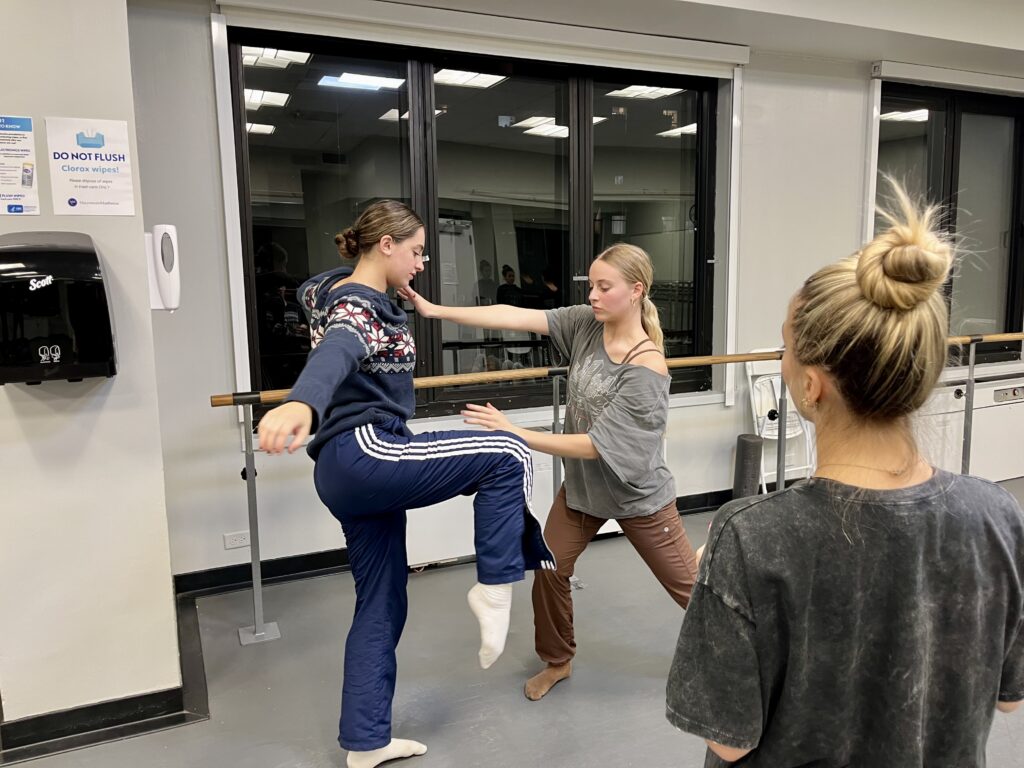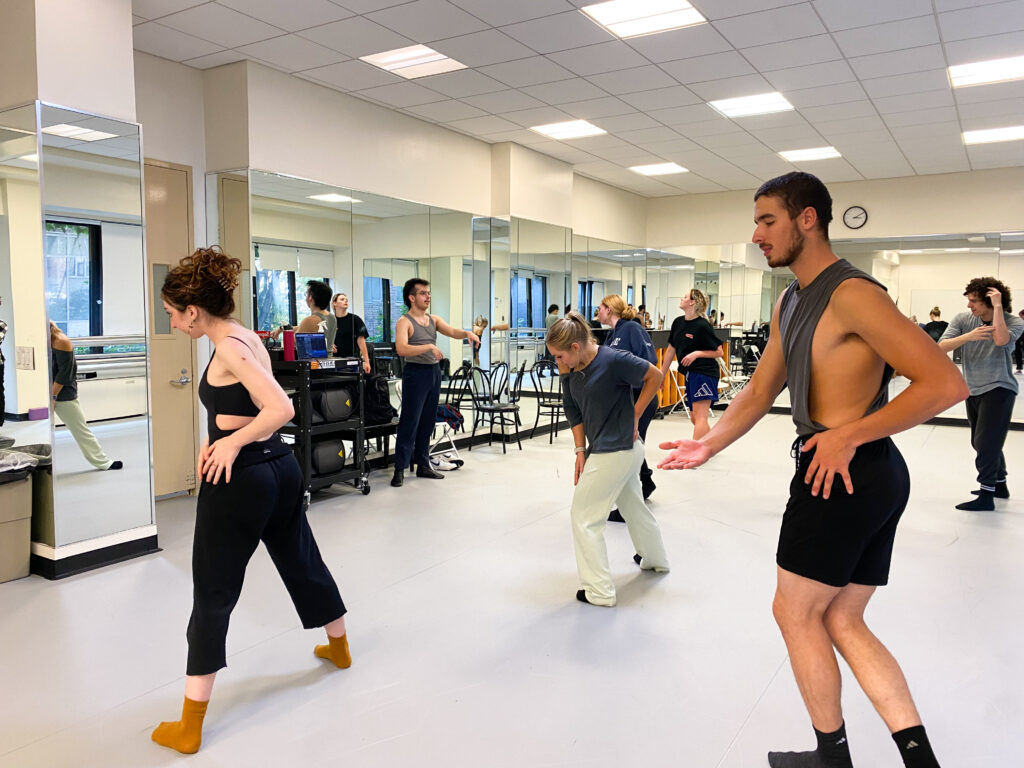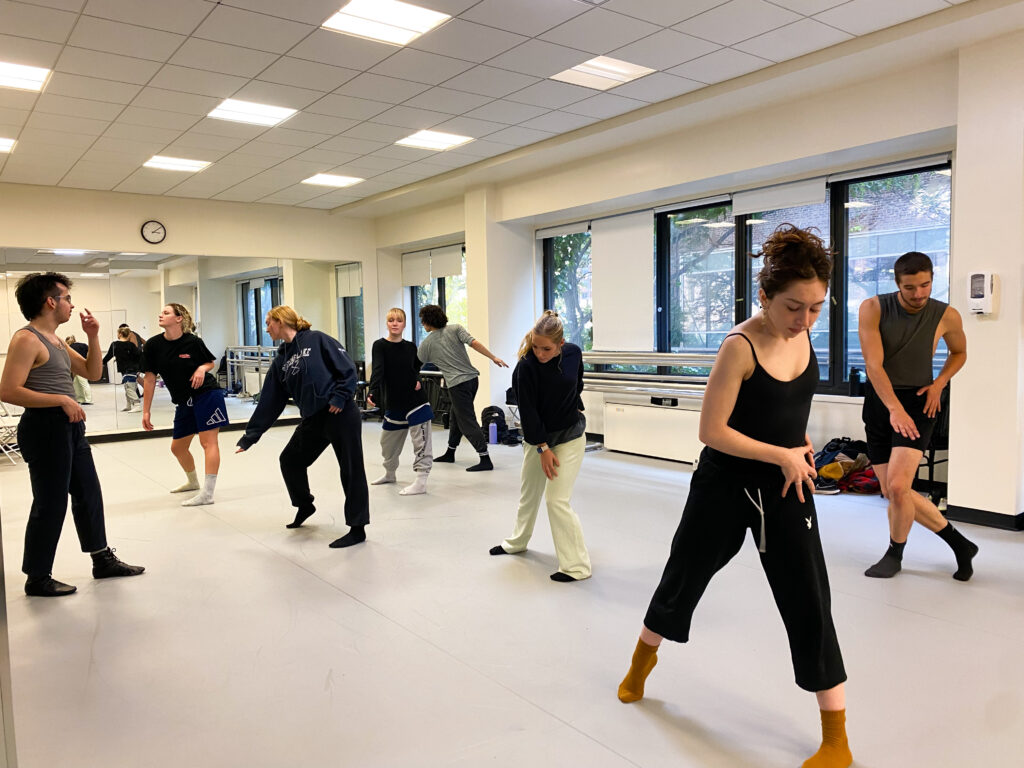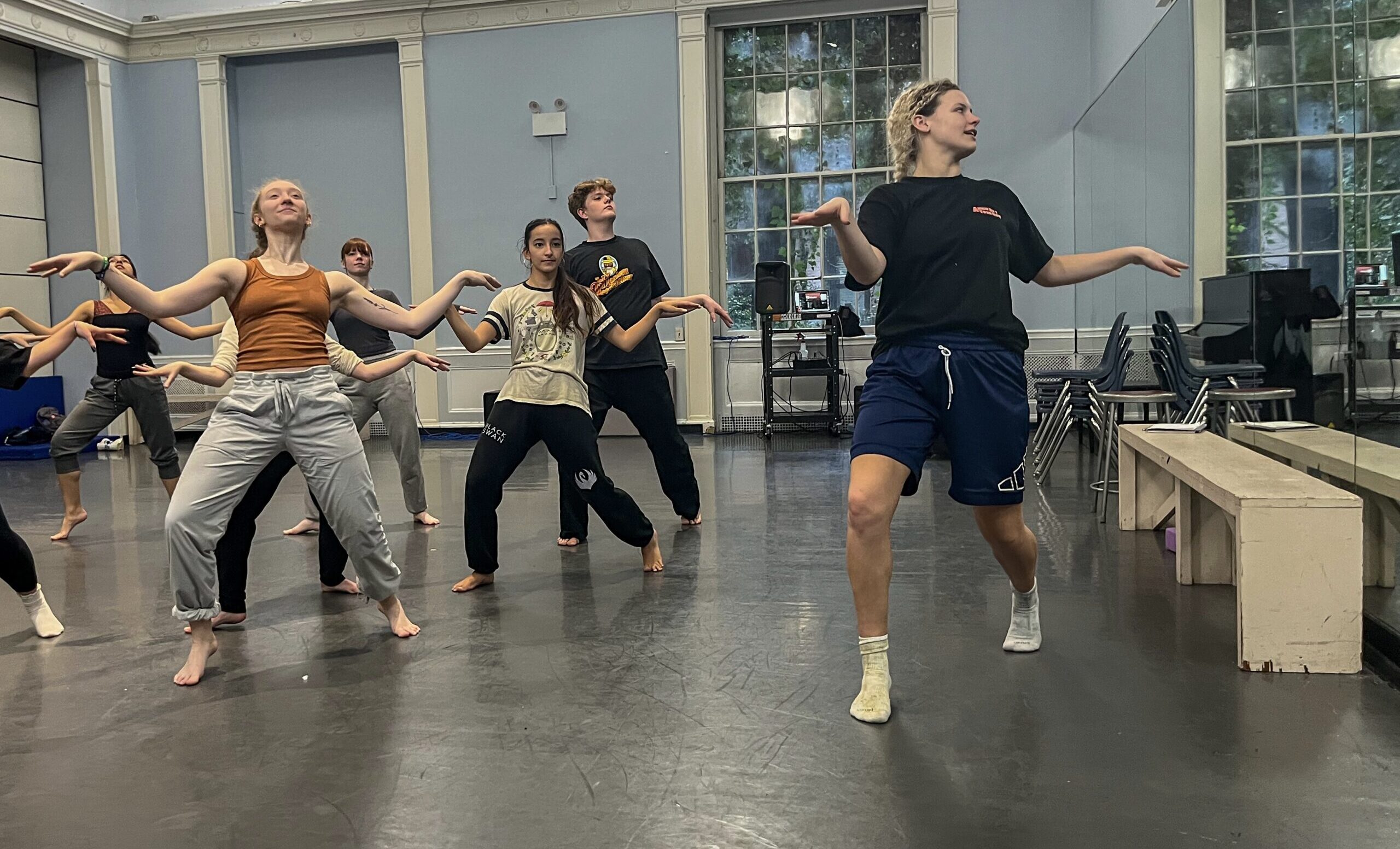How Tomorrow’s Choreographers Are Cultivated at Marymount Manhattan College
Most students major in dance seeking rigorous training and career-focused knowledge to succeed in the professional world. But the team at Marymount Manhattan College doesn’t just help students land their dream dance job—they give them the tools to create it.
With a degree program unmatched in its flexibility, dance students at Marymount can craft a course of study uniquely suited for their interests. Students can choose from four concentrations in both the BFA track (ballet, modern, jazz, and choreography) and the BA track (body, science, and motion; dance and media; dance studies; and teaching dance arts), and can even add other majors, minors, or concentrations. One of the department’s most popular concentrations is choreography, as the school offers a plethora of opportunities for students to develop their artistic voices.
Enter Dancers at Work, or DAW, the department of dance’s biannual showcase of student choreography and performance. Held in the college’s Great Hall, one of the largest studios in Manhattan, DAW consists of two separate weekend programs and features both BA and BFA dancers and choreographers.

Choreographing for DAW is a semester-long endeavor grounded in collaboration, creativity, and practical application. In creating their own pieces, students learn firsthand what it takes to be a professional choreographer, from leading a rehearsal room to coming up with costume designs, and everything in between. Mounting a five-to-eight-minute piece can be overwhelming, which is why the first weekend of DAW performances is designed to support first-time choreographers. Pieces in the second program have added technical elements including lighting and costume design, adding other elements of challenge.
Guidance Along the Way
Each DAW choreographer is assigned both a faculty and a music mentor who can assist with anything from creative roadblocks to securing music rights. “Early on, my mentors helped me by solving problems like how to use everybody effectively, or account for the orientation of the audience,” says Gabe Katz, a 2018 graduate with a BFA in dance (choreography concentration) and a minor in studio art. “As my compositional skill set grew, they were more interested in challenging my perspective, and pushing my work to a place where it felt the most authentic to me.”
Throughout the semester, DAW assignments offer choreographers structure and a chance to refine their vision. “We all start with so many ideas that we want to bring to life,” says Melissa Guerra, a BFA dance major (choreography concentration) who’s also pursuing a BA in communication and media arts and a minor in business management. “The assignments for costuming, music editing, and more make sure we’re checking off every task at the proper time.”
After submitting initial project proposals, student choreographers refine their ideas with their mentors. According to Bella Mittenthal, a recent BFA graduate with concentrations in choreography and modern and a minor in graphic design, “I’m now applying to present at different shows and showcases and the process is very similar, so I don’t get overwhelmed when I need to write out my ideas or explain what I’m trying to create.”
Seeing the Big Picture
DAW isn’t just about choreography—students are tasked with orchestrating every aspect of their work, from costuming to set design. Thus, dance students are required to take a course in stagecraft their freshman year that gives them a glimpse into several of these fields. “I’ve ended up working with my stagecraft professor twice now postgrad, which is a credit to Marymount recruiting teachers who are active professionals,” says Katz. “I might not be an expert in lighting or sound, but thanks to stagecraft, whatever venue I’m working in, I know the right terminology to communicate with professionals.”
Choreographers are also encouraged to collaborate with other Marymount students outside of the department of dance. In her latest DAW program, Guerra says she “was able to work with a student who knew a lot about lighting and directing—he came to a few of my rehearsals, and we talked about different lighting choices and what messages I could convey,” she says. “Because of that collaborative experience, I feel a lot more comfortable articulating myself.”

As students experience Marymount’s liberal arts curriculum in tandem with their technique classes, they investigate the social, political, and cultural aspects of the performing arts, discovering the impact their own work can make on the world around them. “On top of compositional tools, in Dance Comp II, I explored how I can make my dancers feel comfortable and seen as a choreographer, which I believe is so important in today’s industry,” says Bella Luttrell, a dance major with concentrations in choreography and jazz. “During my last DAW semester, a course called Ethics/Aesthetics/Gender in the Performing Arts gave me so much knowledge and material to use for my piece, which was about reclaiming femininity,” Guerra says.
New York City as Your Campus
Showing completed pieces at DAW’s biannual performances is an achievement in itself but, due to the school’s location in the dance capital of New York City, this is often just the beginning of what students can accomplish. “In my senior year, one of my professors invited me to restage my DAW piece on her trainees at the Joffrey Ballet School, where I’ve since taught and choreographed several different pieces,” Katz shares.
Similarly, Mittenthal was able to present a work from DAW at the American Heart Association’s 2022 Go Red for Women fundraiser and the New York State Dance Education Association thanks to connections from her faculty mentor.
Discovering Process Over Product
As students progress through their choreography concentration and experiences with Dancers at Work, they discover the value of process over product. “When I first started choreographing, I was concerned about perfection and people executing exactly what I needed them to do,” Katz says. “By my senior year, I was much more excited by the potential for real-time collaboration and choice-making, and allowing my dancers to shine as individuals.” Mittenthal reflects on a similar learning curve: “At first, my process was very careful and planned, but not necessarily in a way that benefited my creative practice. By the last piece I made, I had so much more confidence running the room and not second-guessing my ideas, so I could be more flexible in my approach.”

Through the intersection of engaging courses, rigorous training, and ample artistic freedom, the faculty at Marymount equip dancers with confidence and a broad vision of what they can achieve as professionals. Luttrell’s goal is to choreograph for Broadway or a movie musical. “To prepare for that, I’m focusing on the storytelling aspect of my choreography, which has definitely come through in my DAW pieces,” she says. Guerra, meanwhile, has been taking film courses to explore choreography on camera, but she’s open to possibilities. “I came into Marymount freshman year thinking I had a clear idea of what my aspirations were,” she says. “But my time here has expanded my perspective of what dance could be so greatly that I know I’ll always want to keep learning and growing long after I graduate.”




